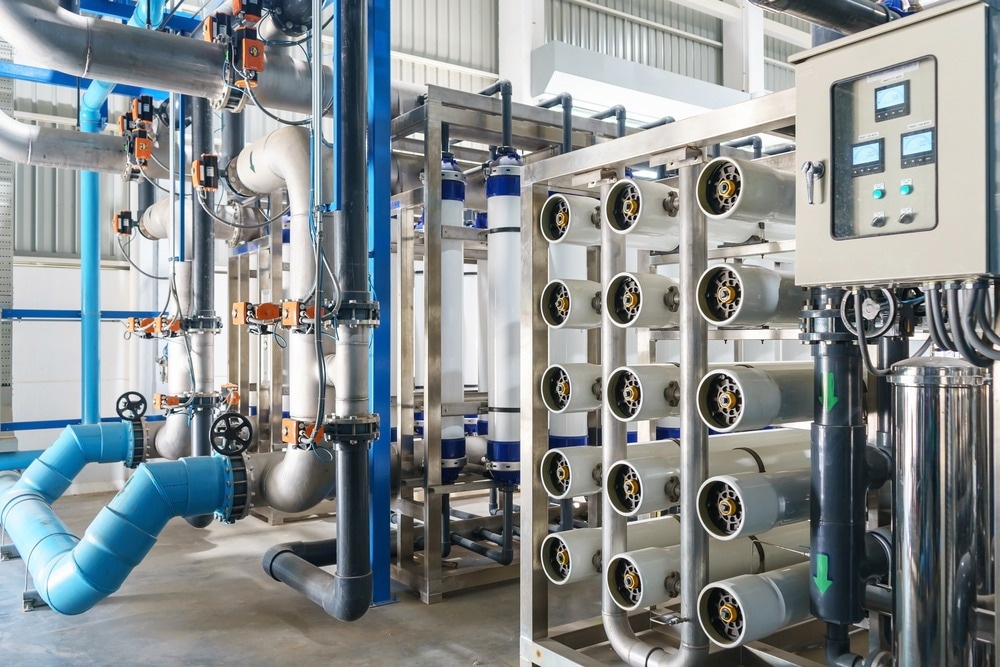An international team of scientists from Morocco, India, Egypt, Saudi Arabia, and the US have collaborated on a comparative review of recent advances in nanocomposite membranes for water filtration. Their findings have appeared in the journal Materials.

Study: Recent Advances in Adsorptive Nanocomposite Membranes for Heavy Metals Ion Removal from Contaminated Water: A Comprehensive Review. Image Credit: NavinTar/Shutterstock.com
Water Contamination: An Urgent Problem
Water contamination is a critical issue due to population growth, industrial activity, and domestic waste. Pollutants such as heavy metals, raw sewage, and pharmaceutical chemicals cause environmental damage and affect the health of humans and animals, entering the food chain and threatening food supplies and vulnerable communities worldwide.
Heavy metals, in particular, can cause considerable damage to health and are increasingly being linked to cancer, organ damage, and neurological disorders. They possess high degrees of bioavailability, toxicity, and are non-degradable, leading to their proliferation in the environment.
![Dye removal using graphene oxide (GO) mixed matrix membranes [87].](https://www.azom.com/images/news/ImageForNews_59733_1659952909633551.png)
Dye removal using graphene oxide (GO) mixed matrix membranes. Image Credit: Damiri, F., et al., Materials
Removing Water Contaminants
Due to the critical nature of water contamination and the environmental, social, and economic effects it has globally, there is a growing body of research on remediation and removal strategies.
Several techniques have been explored in recent decades, including physical, chemical, and biological processes. Co-precipitation, membrane filtration, electrochemical treatment, and adsorption have been widely researched to tackle this issue. Many of these processes have been coupled to provide optimal results for water contaminant remediation.
Amongst the various contaminant removal techniques which have been developed over the years, adsorption is the most commonly used. This is due to its simplicity and cost-effectiveness. Several adsorbents have been explored for the removal of heavy metals from wastewater, including zeolites, carbon foam, polymers, activated carbon, biochar, and clay materials.
Polymers derived from carbohydrates, such as chitosan and cellulose, have piqued the interest of multiple researchers in recent decades. These adsorbents are biodegradable, naturally abundant, eco-friendly, cost-effective, and can be easily modified. This makes them environmentally and economically advantageous materials for the removal of heavy metals and other pollutants.
Furthermore, organic and synthetic polymers have been incorporated into adsorbent matrices to improve adsorption capacity. Some adsorbents, such as activated carbon, however, are complex and expensive to manufacture and do not adequately degrade in the environment.
Research into low-cost adsorbents is a key focus in environmental remediation currently. Whilst there have been considerable advances in manufacturing cost-effective solutions and hybrid strategies, key challenges in this area in terms of material design and production hinder the widespread commercial application of advanced water filtration strategies.
![The mechanism of heavy metal ion absorption by 6O-MWCNTs@Fe3O4 in wastewater [91].](https://www.azom.com/images/news/ImageForNews_59733_16599529483171221.png)
The mechanism of heavy metal ion absorption by 6O-MWCNTs@Fe3O4 in wastewater. Image Credit: Damiri, F., et al., Materials
The Study: Exploring the Use of Nanomaterials for Effective Contaminant Removal
The new paper in Materials has provided a comparative study on techniques for removing heavy metals using nanomaterials. Pairing conventional methods with nanotechnology has become a viable alternative in recent decades.
Nanomaterials possess advantageous physiochemical properties compared to conventional materials widely used in water filtration. These include high surface areas, functional sites which enhance their surface chemistry, optimal pore size distribution, and good intra-particle diffusion lengths.
Several studies have investigated the use of nano absorbents to remove heavy metals in recent years. Zeolites, carbon-based nanomaterials, metal oxides, and metal-organic networks have all shown promise. Some challenges exist with these materials, however. Van der Waals interactions tend to cause agglomeration, leading to lower adsorption capacities with these materials.
Difficulties with separating nanomaterials from aqueous materials are also a key challenge that currently limits their use for heavy metal adsorption. Problems with pressure drop and low mechanical strength hinder their use in flow-through systems such as fixed column beds. One strategy to overcome this limitation is to embed nanomaterials into polymeric membranes, which are highly permeable.
The field shows huge promise despite these limitations. In order to enhance the efficaciousness of this technology, the study has focused on recent advances in nano-adsorbent-incorporated membranes for the removal of heavy metal ions. In the paper, processes, fabrication methods, challenges, and prospects have been discussed in-depth.
![Fabrication processes for electrospun nanofiber composites [201].](https://www.azom.com/images/news/ImageForNews_59733_16599529827641304.png)
Fabrication processes for electrospun nanofiber composites. Image Credit: Damiri, F., et al., Materials
Nanomaterials such as carbon-based nano adsorbents, hydrogels, metal-based nano adsorbents, nanocomposites, nano-sponges, and layered double hydroxides have been explored in depth. Additionally, materials that possess promising potential for heavy metal removal, such as graphene, carbon nanotubes, metal nanoparticles, biomass-derived nanoparticles, and metal oxide nanoparticles have been highlighted.
The role of nanomaterials and nanocomposites and their beneficial properties, such as mechanical strength, anti-fouling, porosity, permeability, and hydrophilicity have been discussed by the authors. They have made note of methods to improve nanocomposites, such as surface chemistry alteration. Furthermore, fabrication methods such as homogenous solution synthesis, electrospinning, and phase inversion have been explored.
Challenges highlighted include agglomeration, which can lead to fouling and decreased contaminant removal efficiency, microbe re-growth, safety, potential toxicity, prohibitive cost, and industrial scalability.
In the paper, it is recommended that developing novel nanomaterials with enhanced functionality that can meet cost and efficiency demands should be a focus of future research. Polymeric nanocomposite membranes are a potentially beneficial field of research. In conclusion, the outlook, despite current obstacles and challenges, is promising for this field of environmental remediation and water treatment.
Further Reading
Damiri, F., et al. (2022) Recent Advances in Adsorptive Nanocomposite Membranes for Heavy Metals Ion Removal from Contaminated Water: A Comprehensive Review Materials, 15(15) 5392 [online] mdpi.com. Available at: https://www.mdpi.com/1996-1944/15/15/5392
Disclaimer: The views expressed here are those of the author expressed in their private capacity and do not necessarily represent the views of AZoM.com Limited T/A AZoNetwork the owner and operator of this website. This disclaimer forms part of the Terms and conditions of use of this website.